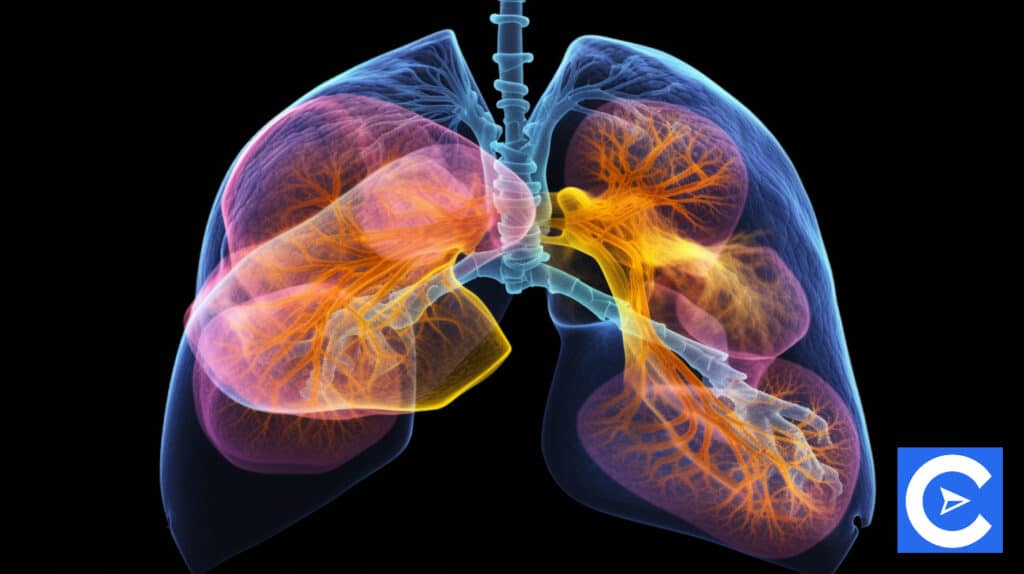Other Free NCLEX PN Study Guides:
There are 8 Modules in NCLEX PN Study Guide. Here you can navigate all the NCLEX PN Study guide modules.
- NCLEX Study Guide Home
- Module 1 | Coordinated Care Of the Patient
- Module 2 | Overall Safety and Control of Infections
- Module 3 | The promotion of health and maintenance
- Module 4 | Integrity in psychosocial functioning
- Module 5 | Providing Basic Care and Ensuring Patient Comfort
- Module 6 | Therapies: Pharmacological and parenteral
- Module 7 | Potential risk reduction
- Module 8.1 | Adapting physiologically
- Module 8.2 | Adapting physiologically
- Module 8.3 | Adapting physiologically
let’s get started right away.
Pharmacokinetic principles
Drug routes, absorption, dosages, frequencies, distributions, and serum levels factor into pharmacokinetics.
Here are some things to keep in mind:
- The doses needed for the recipient and the rate of clearance of the drug they are given
- The volume of distribution
- The elimination half-life as well as the context-sensitive half-life
- Recovery time
- Effect-site equilibrium
- Bioavailability of the drugs
Pharmacodynamic principles
A drug’s biological effects may be beneficial and adverse over time, which is the focus of this principle.
You should pay attention to drug transport, absorption, elimination, and half-life if you are trying to calculate these effects.
Medication dosage can be adjusted according to pharmacodynamic principles (pharmacokinetics).
Drug clearance and first pass metabolism
The liver (via bile) and kidneys (via urination) are responsible for removing drugs from the body through a process known as drug clearance.
As drugs pass into the hepatic portal system through the gastrointestinal tract, they undergo first pass metabolism.
They are processed by the liver, which can have a significant impact on the bioavailability of some drugs.
Enterohepatic recirculation and renally-excreted drugs
This involves removing drugs from circulation and reabsorbing them into the body.
Due to this, the duration of action of the drugs is prolonged, but the clearance is diminished.
A renally-excreted drug will be metabolized by the liver so it can be excreted by the kidneys.
If a patient has renal problems, they should not take drugs that depend on kidney clearance.
Routes of administration and absorption
Drugs absorb differently depending on how they are administered.
- Oral: Most of the absorption occurs in the small intestine, and various factors may influence the rate at which this process occurs. Oral administration should also take first pass metabolism into account
- Intravenous: The absorption rate is 100% with this method of drug administration. It is not possible to give some drugs in this manner, however, due to vein irritation or toxicity.
- Intramuscular: Because muscle tissue is highly vascularized, it absorbs drugs relatively quickly when drugs are injected there.
- Subcutaneous: The dermis is not as vascularized as muscle, so injecting drugs beneath the skin will take longer for them to absorb.
Medication side effects
The side effects of drugs should always be taken into consideration when administering them to patients.
In this regard, it is imperative to follow these three steps at all times:
- Ask the patient if they have any allergies or if they have ever experienced a drug reaction
- Precautions should be taken to inform the patient of any potential side effects of the medication they are receiving
- Take caution when combining multiple drugs for a patient
Adult medication administration principles
Classification of drugs
Drugs can be classified as:
- Therapeutic
- Pharmacological
In your coursework, you can also learn more about the different schedules of drugs according to the Controlled Substances Act.
Drugs are classified into five schedules in total.
Medical administration: The 5 Rights
It is important to follow the 5 rights of medication administration in order to prevent medication errors.
These are:
- The right patient
- The right drug
- The right dosage
- The right route to be administered
- The right time/frequency
Drug administration routes
Here are the most common routes of drug administration:
- Enteral involves the use of a feeding tube, orally, or rectally
- Topical treatments include inhalation, vaginal, nasal, eye, and skin application
- Parenteral options include IV, subcutaneous, epidural, intracardiac, intradermal, intramuscular, and more
These common routes can vary in a number of ways.
When choosing one, consider the following factors:
- The speed at which the drug is required
- The effectiveness of the potential route chosen
- Toxicity chances
- The level of discomfort caused by the chosen route
- How likely is it that the patient will agree with the chosen route
- Whether a route has the potential to contribute to a patient’s addiction
Pharmacology: Cardiovascular

You covered a lot of cardiovascular pharmacology in your coursework, and all of it is crucial for the exam, so we won’t attempt to summarize it.
The following are the most important parts to read:
- Medications: Anti-hypertensive including the various types of diuretics
- Antidysrhythmic drugs from Class 1 to Class IV as well as those that are unclassified
- Muscle relaxants
- Calcium channel blockers
- Vasodilators
- Inotropic agents
- Heart failure medications
- Glycoprotein IIB/IIIA inhibitors
Pharmacology: Respiratory

Asthma: Pharmacological agents
To help control asthma, here are some pharmacological agents that are often used.
In addition to providing relief from acute asthma attacks, long-acting options also exist to prevent future attacks.
- Adrenergic agonists
- Anticholinergics
- Corticosteroids
- Methylxanthines
- Magnesium sulfate
- Heliox
- Leukotriene inhibitors
Pulmonary pharmacology: Additional agents
Depending on the disease type and severity, various other agents can be used.
These include:
- Opioid analgesics
- Neuromuscular blockers
- Human B-type natriuretic peptides
- Surfactants
- Alkalinizers
- Pulmonary vasodilator
- Methylxanthines
- Diuretics
- Nitrates
- Antibiotics
- Antimycobacterials
- Antivirals
There will be all the information you need about these agents in your coursework.
Pharmacology: Endocrine

Oral hypoglycemic agents
Generally, these are used to treat Type II diabetics.
A hypoglycemic agent can be classified into five categories:
- Sulfonylureas
- Biguanides
- Meglitinides
- Competitive inhibitors of alpha-glucosidases
- Thiazolidinediones
Two more classes of inhibitors have recently been introduced: DPP-4 and SGLT2.
One common biguanide oral hypoglycemic medication is metformin.
Insulin treatments for glycemic disorders
There are a variety of insulin treatments available for glycemic disorders.
Often, the way they are prescribed depends on the level of activity, the intake, and the metabolism of each individual.
These treatments include:
- Humalog
- Regular
- NPH
- Insulin glargine
- Combined NPH/regular
Pharmacology: Immunologic and Oncologic

Immunosuppressant drugs
You will need to be aware of the side effects and the action of these immunosuppressant drugs.
- Corticosteroids
- Ciclosporin
- Intravenous immuno-globulin G (IVIG)
Chemotherapy
Cancer patients undergo chemotherapy to control cancer-related symptoms and extend their lives.
Among the chemotherapeutic agents are:
- Alkylating agents
- Nitrosoureas
- Antimetabolites
- Antitumor antibiotics
- Plant (vinca) alkaloids
- Steroid hormones
Chemotherapy can be delivered in a few ways such as oral, intravenous, and intramuscular delivery.
It depends greatly on the patient as to the side effects, although some can be mitigated with medication.
Bone marrow suppression, hair loss, mouth ulcers, sore gums, sore throat, nausea, vomiting, heartburn, and weight loss are all possible side effects.
Chemotherapy can cause infection, anemia, neurological damage, retina damage, kidney damage, and heart damage without proper monitoring.
Pharmacology: Hematological

Anticoagulants
A common hospital anticoagulant list is as follows:
- Antithrombin activators
- Direct thrombin inhibitors
- Direct Xa inhibitors
- Antithrombin (AT)
- Warfarin
In your coursework, you can learn more about all of them.
Thrombolytics
An individual would need thrombolytic medication to dissolve clots after a DVT, pulmonary embolism, ischemic stroke, or myocardial infarction.
A combination of thrombolytics and heparin may be given to increase anticoagulation effects.
In terms of administration, it should be done within 90 minutes of the event, no later than six hours after it, otherwise hemorrhaging is more likely to occur.
The following are some common thrombolytics:
- Alteplase tissue-type plasminogen activator
- Anistreplase
- Reteplase
- Streptokinase
- Tenecteplase
Thrombolytic therapy contraindications include:
- Hemorrhage (both cerebral or subarachnoid) or other forms of the patient bleeding internally
- Seizures and hypertension that cannot be controlled
- Intracranial AVM, aneurysm, and neoplasm
- Low platelet count
Anticonvulsants
The following anticonvulsants may appear on the exam:
- Carbamazepine
- Clonazepam
- Ethosuximide
- Felbamate
- Fosphenytoin
- Gabapentin
- Lamotrigine
- Levetiracetam
- Oxcarbazepine
- Phenobarbital
- Phenytoin
- Primidone
- Tiagabine
- Topiramate
- Valproate/Valproic acid
- Zonisamide
Administration of Hypertonic Saline Solution (HSS)
As a way to reduce intracranial pressure through osmosis, HSS is used to treat patients who have sustained traumatic brain injuries.
Concentrations of HSS range from 2% to 23.4%.
As well as expanding plasma and raising CCP, HSS inhibits hyponatremia.
Mannitol
A sodium and water diuretic, Mannitol reduces the size of the brain and intracranial pressure through the excretion of these substances.
Additionally, it is able to help other medications penetrate the blood-brain barrier.
Pharmacology: Pharmacology

Histamine receptor antagonists
GERD and heartburn caused by excessive stomach acids can be treated with histamine receptor antagonists.
As a result of taking this medication, specific stomach histamine 2 receptors will be blocked.
The result is a significant reduction in acid production.
These antagonists aren’t used as often as proton-pump inhibitors nowadays, but the most common ones are:
- Cimetidine
- Famotidine
- Nizatidine
Antacids
In addition to relieving indigestion and heartburn, antacids also help relieve gas and bloating.
They do this by reducing stomach acids by elevating the pH level.
Antacids also neutralize stomach acids.
The following types of antacid medications are available:
- Aluminum hydroxide
- Magnesium hydroxide
- Aluminum hydroxide with magnesium hydroxide
- Calcium carbonate
- Alka-Seltzer
- Bismuth subsalicylate
Proton pump inhibitors (PPIs)
The use of these in the medical field has become much more widespread than using histamine receptor antagonists.
Since the PPI affects the stomach wall when taken, it produces fewer enzymes that produce acid, reducing stomach acid.
A PPI can be used to combat ulcers and GERD, for example.
It is important to note that PPIs can cause GI upset and headaches, while occasionally, they can cause intense muscle pain.
In addition, they can interfere with the body’s ability to absorb other drugs.
Pharmacology: Pain management

WHO Pain ladder
The algorithm was designed specifically for treating pain in both adult and pediatric patients by medication.
Medication is given in progressively stronger doses.
Whenever possible, start with the least potent medication and increase the strength (if necessary) until pain relief is achieved.
The WHO pain ladder consists of three steps:
- Step 1: Non-opioid medications are prescribed to the patient. It can be combined with or without extra adjuvant therapies
- Step 2: If the patient’s pain level does not change, opioids that reduce mild to moderate pain can be prescribed. The use of adjuvant therapy can also be incorporated now if it has not been used in step 1
- Step 3: If the patient’s pain does not improve, they can now receive moderate to severe opioid painkillers while continuing with adjuvants.
Pain medication: Scheduling
A combination of acetaminophen and ibuprofen is given to patients with mild to moderate pain, either on a regular schedule or as needed.
For people with severe chronic pain, opioid pain medications such as MS Contin, Duragesic, and OxyContin are prescribed.
A short-term supplemental medication may also be necessary.
There are many side effects associated with opioids, and patients can become addicted to them if not monitored carefully.
These side effects include:
- Respiratory depression
- Analgesia
- Sedation
- Euphoria
- Miosis
- Nausea
- Suppressing coughs
- Vomiting
- Truncal rigidity
- Constipation
- Hypotension
- And more
Opioids are covered in great detail in your coursework but include:
- Fentanyl citrate
- Methadone
- Oxycodone
- Hydromorphone
- Morphine
Ketamine
Ketamine, a dissociative anesthetic, can be prescribed to patients who are suffering from pain as a complement or as an alternative to opioids.
If no relief is forthcoming after an initial bolus of 0.1mg/kg IV is given, a double dose can be administered in 5 minutes and then repeated when necessary.
The treatment of breakthrough pain
How can breakthrough pain be treated?
Let’s look at three ways.
- Incident pain occurs as a result of an event or activity, such as changing a wound dressing or physical therapy. Short-acting analgesics can be used prior to the event to treat the pain they will experience.
- Spontaneous pain cannot be attributed to a specific time or event, and it is mostly unpredictable. Neuropathic pain that is spontaneous can be treated with adjuvant therapy, but a short-acting, rapid-acting analgesic can also be used
- End-of-dose failure occurs when drug levels in the blood begin to decline after a routine dosing cycle when analgesics have been administered
Neuropathic pain treatment
This kind of pain is most effectively treated by anticonvulsants, anesthetics, and antidepressants.
They are typically given as a constant dose with 24-hour symptom control, but patients can be given them as needed.
Medication choice will depend on the type of disorder and its progression.
Bone pain treatment
When dealing with bone pain in cancer patients, the causative agent plays a significant role in the choice of treatment.
Treatment options include:
- Systematic treatment (chemotherapy, radiation)
- Hormone therapy
- Bisphosphonates
Opioids, NSAIDs, and COX-2 inhibitors can be administered while surgery too, is an option, if safe removal of the cancerous growths is possible.
End-of-life patient pain medication concerns
Medication for end-of-life patients must take several considerations into account.
First, adequacy.
It is common for patients to be concerned about the medication they will receive and whether it will be sufficient enough to alleviate their pain.
Second, sedation/addiction.
Concerns are often raised by patients and their families about how pain medications may affect their overall cognition or if they will become disoriented, confused, or permanently sedated.
The patient may also have questions regarding pain medication addiction, especially if the patient is in the early stages of the end-of-life process.
Third, adverse effects.
Families and patients will also ask about the side effects of medications, for instance nausea or vomiting, which can be very uncomfortable.
Psychosocial pharmacology

Antipsychotic medications
It is important to discuss two generations of antipsychotic medications.
In spite of the fact that first-generation antipsychotic medications are not as common as they once were, they are still in use today.
They include:
- Chlorpromazine
- Thioridazine hydrochloride
- Haloperidol
- Pimozide
- Fluphenazine hydrochloride
- Molindone Hydrochloride
- Trifluoperazine hydrochloride
Often, second-generation antipsychotics (SGAs) are used to treat psychosis, schizophrenia, and bipolar disorder.
These include:
- Aripiprazole
- Clozapine
- Olanzapine
- Quetiapine
- Risperidone
- Ziprasidone
Antidepressants
People with depression are usually treated with these, but they can also be used on those with anxiety disorders and atypical depression.
Additionally, they can be used to treat insomnia, ADHD, chronic pain syndrome, and premenstrual syndrome.
SSRIs
Both anxiety and depression can be reduced by selective serotonin reuptake inhibitors, a class of antidepressants.
As a result, the presynaptic member cannot reuptake serotonin.
These medications include citalopram, escitalopram, fluoxetine, fluvoxamine, paroxetine, and sertraline.
Tricyclic antidepressants
They stop serotonin reuptake like SSRIs, but they also do more.
These drugs also block the muscarinic, cholinergic, and histamine H1 receptors.
Despite having nothing to do with depression, blocking these is crucial to avoiding the side effects associated with tricyclic depressants.
Anti-anxiety medications
Benzodiazepines
Anxiety sufferers often take this to combat their symptoms.
Common benzodiazepines include:
- Chlordiazepoxide
- Diazepam
- Flurazepam
- Lorazepam
- Triazolam
In this medication, the neurotransmitter GABA is targeted and enhanced, which lowers the firing rate of neurons and reduces anxiety symptoms.
Other uses include treating insomnia (because of their sedative effects), controlling seizures, and managing withdrawal from alcohol.
Geriatric pharmacology

Taking medications can have adverse effects on people as they age.
Approximately 10% of elderly patients who experience adverse drug reactions (ADRs) will need to go to hospital.
Some of these side effects include vomiting, edema, loose stools, constipation, urinary retention, and bewilderment.
It’s important to not misidentify the problem, such as if it’s simply caused by aging or something else.
Older adult pharmacokinetics
The pharmacokinetic process involves four steps, each of which depends on a patient’s age and the condition of their organs.
- Absorption: Most drugs are absorbed through the small intestine, and as blood flow decreases in older patients, this may cause absorption to be delayed or decreased
- Distribution: A change in body composition will affect drug distribution. In older adults, lean muscle mass and body water percentages are lower. As a result of higher total body fat, lipid-soluble drugs can act for longer periods of time
- Metabolization: Either the liver or kidneys will metabolize drugs given to a patient. There will be a delay in metabolization when these organs work at a diminished level of function
- Renal function and elimination effectiveness: As a person ages, this will become less effective. As a result, the kidneys become less efficient at eliminating medications and toxins from the body. Due to the longer time drugs spend in the body, elderly patients, therefore, require smaller doses.
Beers List
There are certain medications that should not be given to older people.
The list can be used to work out which medications are most beneficial and which present the greatest danger to patients.
Medication use difficulties elderly patients may encounter
These common difficulties can be caused by medication use in elderly patients
- Prescription medication in excess
- Medication compliance and adherence issues
- Due to a lack of understanding or hearing inaccurately what the patient has been told, they may not know how to use the medication correctly
- Forgetting how to use the drugs, such as how much should be taken, how frequently it should be taken, or for what purpose.
- The medication prescribed cannot be afforded by them
- Misreading labels and dosage errors due to vision problems
- Inability to open medication packaging, loss of pills due to their small size, and other problems
Prescription medication: Common adverse reactions
These include:
- Bewilderment
- Weakness
- Low energy
- Constipation
- Diarrhea
- GI Upset
- Tinnitus
- Urinary retention
- Low blood pressure (Orthostatic)
- Depression
- Vertigo
Polypharmacy
An inappropriate combination of medications is used when this occurs.
It occurs when unprescribed medications are taken causing several medications to interact negatively, or contradictory medications are taken.
A detailed drug history obtained at every visit can help prevent this.
Rational drug therapy: MASTER rules
Using the MASTER rules system can establish whether or not a patient should take a certain drug:
- M: Minimize the number of drugs taken by the patient
- A: Instead of drugs, look for alternative treatments that can be effective and use that instead, if possible
- S: Dosages should start as low as possible. They can be increased if need be
- T: Titration or adapting the drug amounts for individual patients over time
- E: The patient should be educated regarding the medications they are prescribed
- R: Drugs prescribed and the dosage thereof should be reviewed regularly









